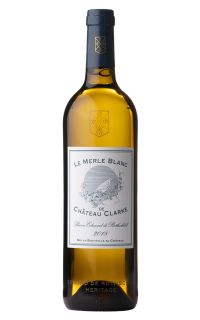Bordeaux's 130-acre wine estate is called Château Clarke. The name in itself refers to the Irish family who bought this enormous estate in 1771. Baron Edmond de Rothschild purchased the property in the year 1973 after being passed down through multiple generations that continued the winemaking legacy for more than two hundred years. Edmond de Rothschild, a wine enthusiast like so many other relatives of his distinguished family, wanted to own a small, modest vineyard that he would transform into his masterpiece. After he acquired ownership of the property, the abandoned vineyard was redesigned and then entirely rebuilt over the next four years. The 54 hectares that made up the final wine-producing area prospered commercially, initiating a new chapter.
Cabernet Sauvignon, Merlot, Cabernet Franc, and Petit Verdot are just a few of the grape varietals that are planted in the vineyard's 6060 vines per hectare. The pursuit of optimum quality necessitates a stringent selection procedure that begins in the vineyard itself, is based on suitable wine-growing methods, and is tested regularly during the harvest season and throughout vinification. The soil is a unique variety of limestone soil that contains calcareous Eocene and calcareous clay. This vineyard uses a very conventional approach to soil preparation. Tilling is mostly done in two distinct seasons: spring and autumn. Traditional vine training techniques are being used, and Double Guyot pruning is a widely used technique. This boosts the wine's longevity before being bottled and aids in the production of the best wine. The renowned Château Clarke by Baron Edmond de Rothschild, which has a durability of twelve months before being bottled, is an example of this.
The planting process began in 1974 and was completed in 1978. Most of the grapes are harvested mechanically, but the entire produce is hand-sorted on ground sheets before pressing. The entire surface was drained before planting. When the vines were mature, between 1987 and 1989, this procedure was repeated. Throughout the maturing period, which lasts 12 to 18 months, egg white is used for fining. Each year, between 150,000 and 250,000 bottles are manufactured.
https://edmondderothschildheritage.com
Find out more

















